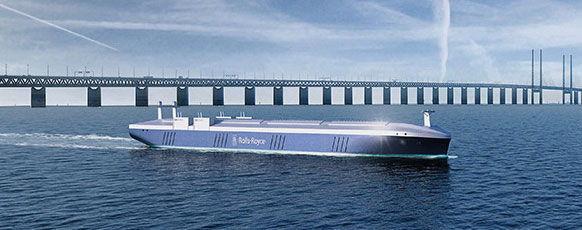By Anita Parlow, AJOT
Editor’s Note: Anita Parlow, Esq., a Fulbright Scholar to Iceland, was advisor to the Harvard-MIT Arctic Fisheries Project, Team Lead for the Woodrow Wilson International Center for Scholars’ Project on the Polar Code. Parlow is currently advising the Port of Nome, Alaska.
Autonomous shipping is about to become a fact of life, particularly in what is arguably the backbone of the global economy – the container industry. In a 2017 report, McKinsey and Company projects that “in 50 years, container ships will operate autonomously and will be nearly three times the size of the largest current vessels.” The global management consulting firm also predicts that the shake-out may leave only three or four liner companies, and that will operate “either as digitally enabled companies or as small units of tech giants.”
Reflecting innovative disruption in the shipping industry, the report “foresees” ocean going ships with a capacity of 50,000 twenty-foot TEU containers, with the possibility of modular, drone-like floating containers alongside. Further, McKinsey envisions a reinvention of the business model with a “fully autonomous transport chain” that will include loading, stowage along with loading onto autonomous trains and trucks, with the “last mile deliveries” by drones.

The report notes that the economies of scale that undergird the growth in the size of container ships is likely to level off at 50,000 TEU because even the current large ships are straining the capabilities of port and terminal operators forced to dredge, purchase new cranes or reinforce quay walls or, extend berths. The expectation is that a “data enabled shipping industry,” would integrate with supply chains, thus producing an entirely new order of performance and efficiency with “smart logistics” that integrates industry with transport.
Companies like Maersk, through Senior Innovation Project Manager note that the goal of autonomous technology is not necessarily “complete autonomy or unmanned vessels” – it is more interested in the development of remote harbor and transit pilotage “to make operations more efficient.”
One Sea – Autonomous Maritime Ecosystem – formed in 2016 by an international multi-industry cooperative initiative – seeks to develop and optimize data connectivity, particularly with ports, and various levels of autonomy. Finland’s Test Area, designed to establish proof of concept, focuses on marine safety, particularly to provide crews with greater understanding of a ship’s environment along with fewer environmental emissions. With eighty percent of accidents due to human error, greater data connectivity and autonomy is viewed as offering greater safety – even though critics note that digitization simply would transfer the risk to remote shore personnel. With a gradual progression of integrated hybrids, auto-docking and short voyages to replace land travel, the process is in its early stages.
Beyond the challenges of technology and concept, is the necessity of a regulatory and governance structure adapted to future challenges. The International Maritime Organization (IMO) has developed a working definition of maritime autonomous ships and is beginning to consider regulatory standards for the possibility of no on-board crew. Further, insurers standards and costs, how to avoid cyber-risk, as well as the most vital question of all – how to retrain long-standing and highly capable crews?
In the Arctic context, shipping remains limited due to ice conditions, insufficient mapping and, few ports sufficient to berth existing container ships. Despite increased shipping, slow investments in both ice-capable and digitally connected ships with shore-based bridges, the Arctic region is, perhaps paradoxically, optimum for shipping in icy waters. Ship’s hulls can be constructed without concern for crew member quarters, powerful ice breakers would lead unmanned cargo ships across the Northern Sea Route and autonomous or hybrid ships capable of remote sensing of the Arctic ocean’s mostly unmapped floor.
With so much at play, the step-by-step approach must above all consider the fate and future of the crews who have served the industry so well.




